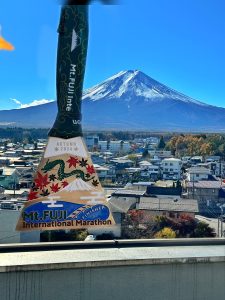
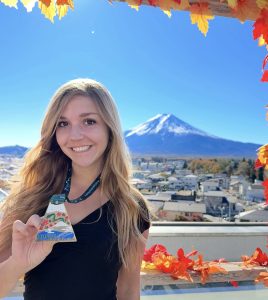
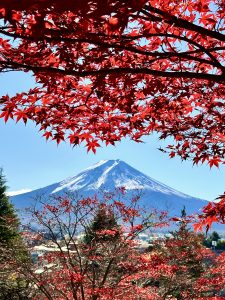
Imagine running with thousands of other runners, watching the towering Mount Fuji on one side and the vibrant autumn leaves surrounding a peaceful lake on the other. The Mount Fuji Marathon, set in the scenic town of Fujikawaguchiko, offers some of the most spectacular views a runner could hope for. The event showcases Mount Fuji in its full glory, contrasting the tranquil beauty of Lake Kawaguchi and Saiko Lake with vibrant autumn foliage. Known for its well-organized course and supportive atmosphere, the marathon attracts both local participants and international runners looking for a unique challenge.
Event Information
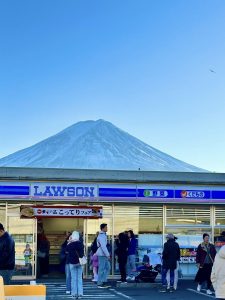
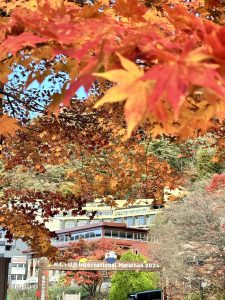
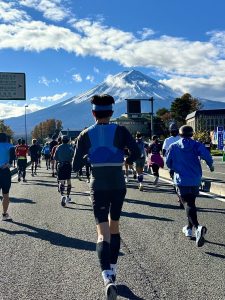
The Mount Fuji Marathon is typically held in late November, when the fall foliage is at its’ peak. The race offers 3 distances: a full marathon, a 17km run around Lake Kawaguchi, and a 10k charity run. Registration for the Mount Fuji Marathon typically opens several months before the race, in the spring. Participants can sign up via the official marathon website or trusted online registration platforms like RunNet Japan.
The entry fee for the Mount Fuji Marathon is typically around ¥10,000 to ¥15,000 (approximately $75 to $110 USD).
Your registration fee covers several important aspects, including:
- Race Kit: A kit that typically includes a race bib, timing chip, and a commemorative t-shirt. Some years, there may be extra items like a tote bag or a towel.
- Finisher’s Medal: Every runner who completes the marathon receives a high-quality finisher’s medal to mark their achievement. I’m not usually one for medals, but this medal was gorgeous and shaped like Fuji.
- Snacks During and Post-Race: Participants are treated to a variety of local snacks and refreshments. The offerings varied from classic marathon fuel like gels, sports drinks, and fruit, to traditional Japaneses snacks like dorayaki, onigiri, and pickled plums.
Course Details
The race begins at Funatsu parking in Kawaguchiko, right by the lake. The first 12 km loop around the town and pass Fuji Omuro Sengen Shrine. After crossing Kawaguchiko Bridge, the route continues along Lake Kawaguchi. Since the roads are closed to cars, spectator support is limited along the lakes, making for a peaceful but solitary stretch. At the halfway point, you complete Lake Kawaguchi’s outer section and pass through Bunkado Tunnel. Next, there is a big hill right around 21km that lasts for a kilometer before flattening out when starting the loop around Lake Saiko. By around 33 km, you hit the downhill after finishing the Saiko loop. To finish, head back along Lake Kawaguchi and return to the start.
The time limit for this course is 6 hours, and they provide several cutoff points. For more details, check the official race website, as the course may change year to year.
Race Day
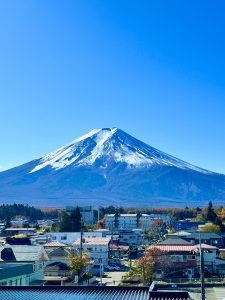
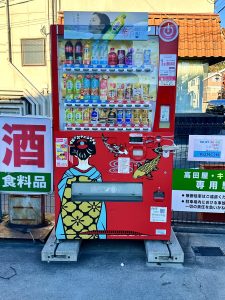
To get to the start line, it’s best to walk down from your accommodation. Fujikawaguchiko is a small town, and most hotels/ryokans/B&Bs are within a 20 minute walk from the start. The marathon starts at 8:00 AM, with participants grouped into corrals based on expected finish times. Bag drop and toilets were available at the start, and there were pacers for common finish times.
At the finish, you will get your medal and a Fuji Marathon towel to stay warm. Once you have collected your memorabilia, sports drinks, water and snacks are available. Hot meals can also be purchased at the finish line.
Things to Do Near Fujikawaguchiko
Chureito Pagoda

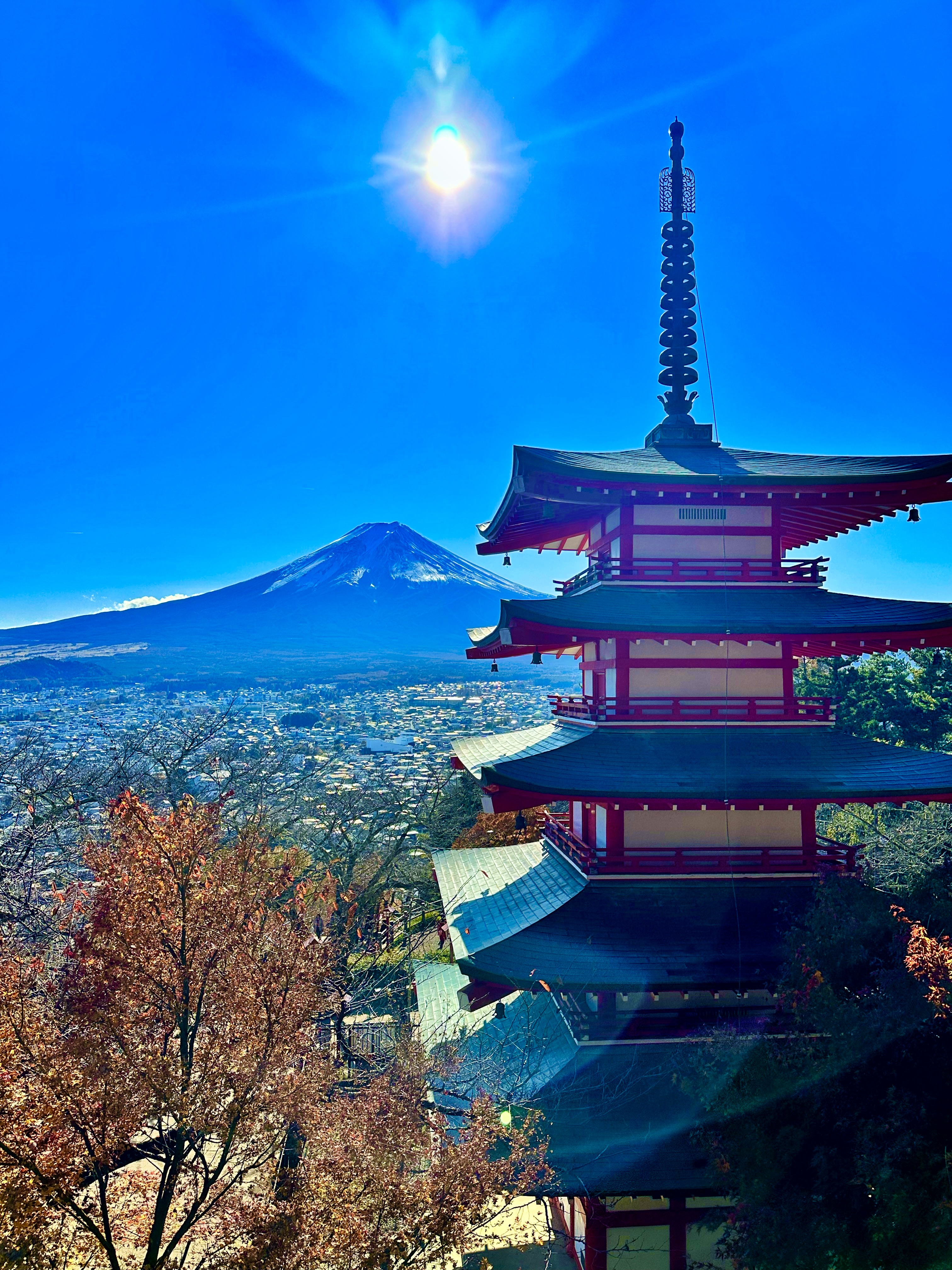
This five-story red pagoda, part of Arakurayama Sengen Shrine, is perfectly aligned with Mount Fuji, creating a postcard-worthy scene that changes with the seasons. In spring, delicate cherry blossoms frame the view, while autumn brings fiery red and orange foliage. Reaching the viewpoint requires climbing about 400 steps, or taking a longer but more gradual path on the side.
Kachi Kachi Ropeway
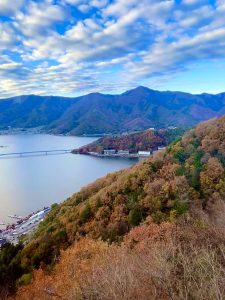
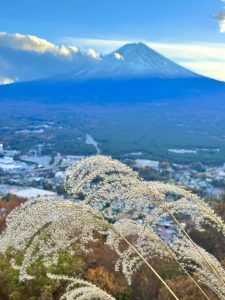
The Kachi Kachi Ropeway offers one of the best panoramic views of Mount Fuji and Lake Kawaguchi, making it a must-visit for photographers and nature lovers. The short 3-minute cable car ride takes you to Mount Tenjo, where you can enjoy scenic lookouts, a fun folklore theme based on the “Kachi Kachi Yama” story, and the heart-shaped Bell of Tenjo, a popular spot for couples. There is also a large swing with views of Mount Fuji for an additional cost.
Fuji-Q Highland
Known for its Mount Fuji views and record-breaking roller coasters, the park attracts adrenaline seekers from around the world. Some of its most famous rides include Fujiyama, once the world’s tallest coaster, Eejanaika, a dizzying 4D coaster, and Do-Dodonpa, which boasts one of the fastest accelerations in the world.
Explore the Lakes
Check out Oshi Park, a lakeside park with seasonal flower displays and a perfect photo spot with Fuji in the background. You may also wish to explore Fuji Five Lakes (Fujigoko) by taking a scenic walk around one of the surrounding lakes (Kawaguchi, Saiko, Yamanaka, Shoji, and Motosu).
Recover in an Onsen
After completing the Mt. Fuji Marathon, soaking in an onsen is the perfect way to recover. Fujiyama Onsen offers a serene, wood-lined setting with mineral-rich alkaline baths, outdoor rock pools, and a high-temperature sauna to relax sore muscles. For a scenic experience, Benifuji no Yu near Lake Yamanaka provides breathtaking views of Mt. Fuji, especially in winter, as you unwind in its open-air rotenburo or herbal steam sauna. Both onsens offer a rejuvenating post-race retreat, combining deep relaxation with Japan’s rich bathing culture.
Getting to Kawaguchiko
Fujikawaguchiko is easily accessible from Tokyo, and can also be accessed from major cities like Osaka or Kyoto. Here are the most common options:
From Tokyo
By Train
- JR Chuo Line (Limited Express) from Tokyo Station to Otsuki Station (about 1.5 hours).
- From Otsuki Station, transfer to the Fujikyu Railway to Fujikawaguchiko Station (about 50 minutes).
- Alternatively, you can take the JR Express Fuji Excursion directly to Fujikawaguchiko Station.
- Total travel time: 2 to 2.5 hours.
By Bus
- Direct buses from Shinjuku Station or Tokyo Station to Fujikawaguchiko Station (about 2 hours).
- The highway buses are convenient, comfortable, and affordable, with a few departures daily.
- Total travel time: 2 hours.
By Car
- From Tokyo, take the Chuo Expressway towards Kofu, then follow the signs to Fujikawaguchiko.
- Keep in mind that parking is limited near the start line, so it’s best to check your accommodation’s parking options in advance.
- Total travel time: 2.5 to 3 hours.
By Shinkansen (From Other Major Cities)
- If you’re traveling from Osaka or Kyoto, take the Shinkansen to Shin-Fuji Station or Mishima Station. Then, transfer to local buses or trains to reach Fujikawaguchiko.
- Total travel time: 3.5 to 4 hours from Osaka, 2.5 hours from Kyoto.
Conclusion
The Mount Fuji Marathon offers an unforgettable experience for runners and spectators alike, combining the thrill of a world-class race with stunning natural beauty. Set against the backdrop of Japan’s iconic Mount Fuji and surrounded by vibrant autumn landscapes, this marathon is more than just a race—it’s a celebration of nature, culture, and personal achievement. Whether you’re running the full marathon, participating in the shorter events, or simply soaking in the breathtaking views, Fujikawaguchiko offers a perfect blend of adventure, relaxation, and local charm. The Mount Fuji Marathon is a must-do for any runner seeking a challenge with spectacular rewards.
